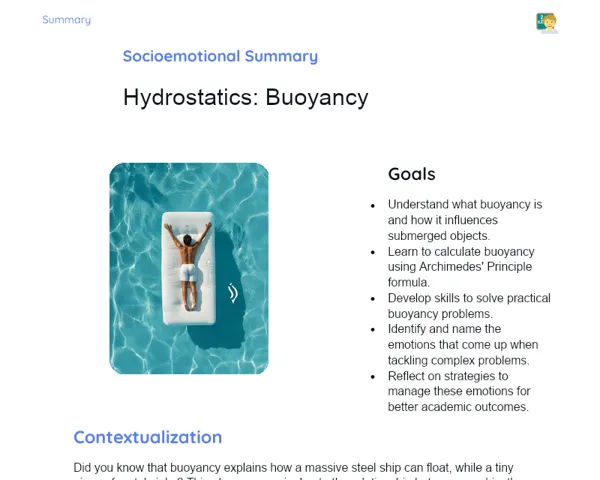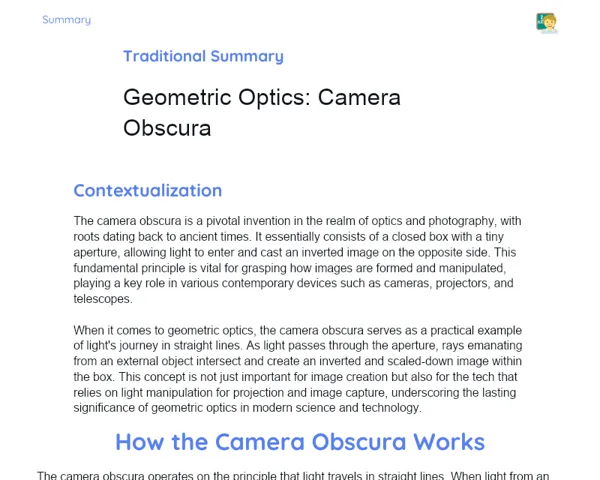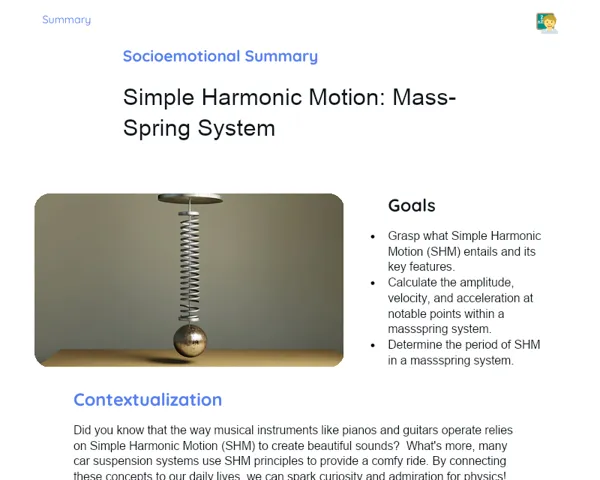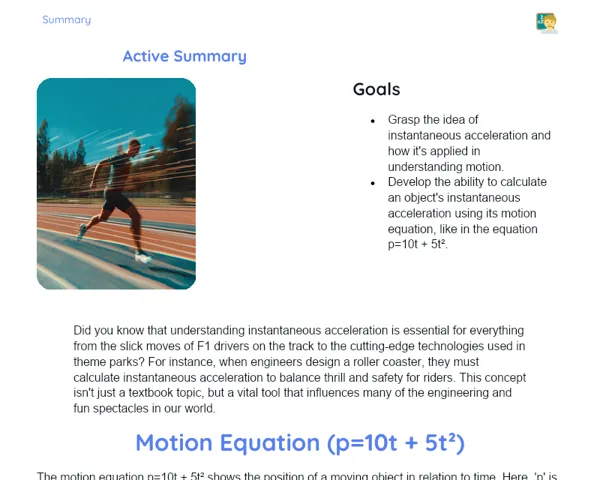Goals
1. Comprehend the Bohr model of the hydrogen atom.
2. Calculate the electronic orbits of the hydrogen atom using principles from modern physics.
3. Determine the radius of the hydrogen atom for the n-th orbit.
Contextualization
The exploration of the hydrogen atom is key to grasping the composition of matter and the progression of modern physics. Through Bohr's model, we can visualise how electrons revolve around the nucleus and how this arrangement affects atomic characteristics. This understanding is essential not only in theoretical physics but also across a range of practical fields, such as medicine (like nuclear magnetic resonance), chemistry (in the analysis of chemical reactions), and materials engineering (in the production of semiconductors).
Subject Relevance
To Remember!
Bohr Model of the Hydrogen Atom
The Bohr model was introduced to clarify the structure of the hydrogen atom, proposing that electrons travel around the nucleus in defined energy levels without losing energy. Bohr suggested that electrons could leap from one orbit to another, either emitting or absorbing a quantum of energy corresponding to the difference in energy between orbits.
-
Electrons circumnavigate the nucleus in set and distinct orbits.
-
These orbits are quantized, meaning only specific orbits are allowed.
-
The energy of electrons is higher in orbits that are further from the nucleus.
-
The Bohr model explains the stability of atoms and the generation of light spectra.
Calculation of Electronic Orbits
By applying Bohr's postulates, we can compute the electronic orbits of the hydrogen atom. The principal formula to determine the radius of the n-th orbit is r_n = n² * r_1, where n is the principal quantum number and r_1 is the radius of the first orbit, roughly 0.529 Å.
-
The radius of the n-th orbit is proportional to the square of the principal quantum number (n²).
-
The constant r_1 signifies the radius of the first orbit, known as the Bohr radius.
-
This model facilitates the calculation of the electron's average distance from the nucleus at various energy levels.
-
Understanding these calculations is fundamental to grasping atomic structure and the emission of spectra.
Practical Applications of the Bohr Model
The Bohr model has numerous practical uses in today's technology and industry. It's foundational for understanding phenomena like nuclear magnetic resonance, the manufacturing of semiconductors, and the research involved in nuclear fusion. The model elucidates how atoms interact with light and other forms of radiation, making it crucial in medical diagnostics and the innovation of new materials.
-
Nuclear magnetic resonance (NMR) employs principles of the Bohr model for diagnosing illnesses.
-
Semiconductor manufacturing hinges on the comprehension of atomic structure and electronic transitions.
-
Nuclear fusion research aspires to replicate the processes within hydrogen nuclei to produce clean energy.
-
The Bohr model provides a base for the formulation of more elaborate theories in quantum physics.
Practical Applications
-
Nuclear Magnetic Resonance (NMR) in medical diagnostics
-
Development of semiconductors in the electronics sector
-
Research into nuclear fusion as a viable clean energy source
Key Terms
-
Bohr Model: Atomic theory proposing defined paths for electrons around the nucleus.
-
Electronic Orbits: Quantised paths that electrons follow around the atomic nucleus.
-
Bohr Radius: Distance of the electron from the nucleus in the first orbit of the hydrogen atom.
-
Principal Quantum Number (n): Number that indicates the energy level and orbit of the electron.
Questions for Reflections
-
How has the Bohr model transformed our understanding of atomic structure, and what are its limitations?
-
In which ways does knowledge of the hydrogen atom impact modern technologies?
-
What are the primary distinctions between the Bohr model and later atomic models, like the Schrödinger model?
Constructing the Bohr Model
This mini-challenge aims to reinforce comprehension of the Bohr model by creating a physical model of the hydrogen atom.
Instructions
-
Form groups of 3 to 4 students.
-
Utilise the provided materials (foam balls to represent the nucleus and electrons, wires or sticks to signify the orbits, and markers to indicate various energy levels).
-
Construct the model of the hydrogen atom adhering to Bohr's postulates. Ensure the orbits are accurately proportioned based on the radius calculated for the n-th orbit.
-
Present the model to the class, explaining the concepts of Bohr and how they are visually represented.
-
Discuss any challenges faced and the solutions developed by the group.



